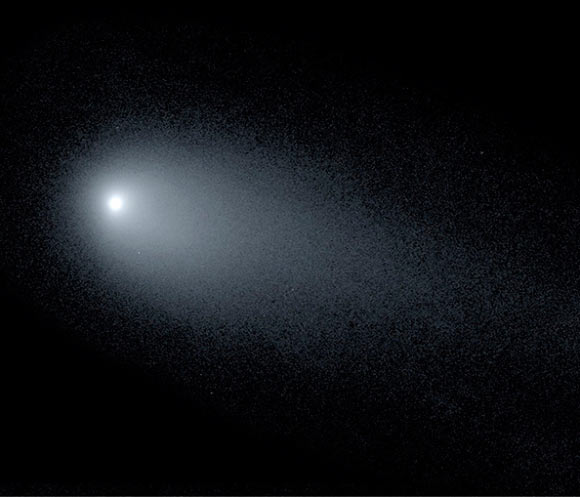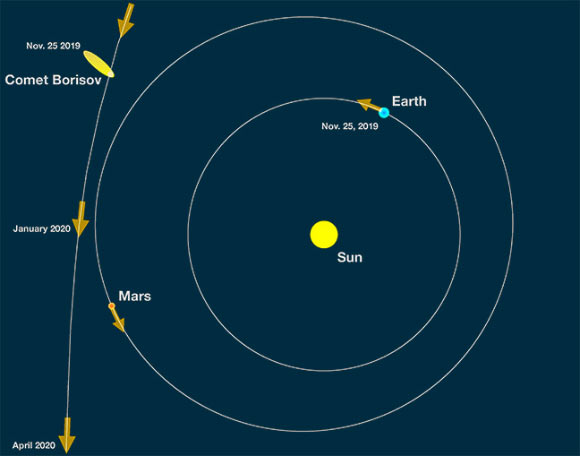Astronomers Capture New Image of Interstellar Comet 2I/Borisov | Astronomy – Sci-News.com
A group of Yale University astronomers has captured a stunning new image of 2I/Borisov, the first known interstellar comet to travel through our Solar System.

Pieter van Dokkum et al captured this image of the interstellar comet 2I/Borisov on November 24, 2019, using W.M. Keck Observatory’s Low Resolution Imaging Spectrometer. Image credit: Pieter van Dokkum / Cheng-Han Hsieh / Shany Danieli / Gregory Laughlin.
2I/Borisov was discovered by Ukrainian amateur astronomer Gennady Borisov on August 30, 2019.
Also known as C/2019 Q4, the comet formed in a planetary system beyond ours and was ejected into interstellar space as a consequence of a near-collision with a planet in its original system.
2I/Borisov has taken on a ‘ghostly’ appearance after it began reacting to the Sun’s warmth. It continues to evaporate as it sails close to Earth, releasing gas and fine dust in its tail.
Currently, the comet’s tail is nearly 100,000 miles (161,000 km) long, which is 14 times the size of Earth, while its solid nucleus is only about a mile (1.6 km) wide.
2I/Borisov is expected to make its closest approach to the Sun on December 8, coming within about 182 million miles (293 million km) of our star.
By the middle of 2020, it will be on its way back into interstellar space where it will drift for millions of years before maybe one day approaching another star system.
To date, astronomers have detected several key molecules in the coma of 2I/Borisov, including: cyanide gas, diatomic carbon and water.
“Interstellar objects like 2I/Borisov are cosmic artifacts that hold a goldmine of data about solar systems other than our own,” said Yale University Professor Pieter van Dokkum.
“We can study the gas and material surrounding 2I/Borisov to characterize its chemical make-up, and compare it to other comets from our Solar System.”

Diagram showing where 2I/Borisov was located relative to Earth along with the orientation of its tail when the new image was taken on November 24, 2019. Image credit: Pieter van Dokkum / Cheng-Han Hsieh / Shany Danieli / Gregory Laughlin / Yale University.
Professor van Dokkum and a tri of his colleagues from Yale University — Gregory Laughlin, Cheng-Han Hsieh, and Shany Danieli — snapped the new detailed image of 2I/Borisov on November 24, 2019, using the Low Resolution Imaging Spectrometer (LRIS), a visible-wavelength imaging and spectroscopy instrument mounted on the 10-m Keck I telescope at the W.M. Keck Observatory on Mauna Kea, Hawaii.
They also captured LRIS spectra of the comet, which could unmask a treasure trove of information about the nature of its home planetary system.
At the time of observations, the comet was slightly more than two Earth-Sun distances from our planet.
“Astronomers are taking advantage of 2I/Borisov’s visit, using telescopes such as Keck Observatory to obtain information about the building blocks of planets in systems other than our own,” Professor Laughlin said.





